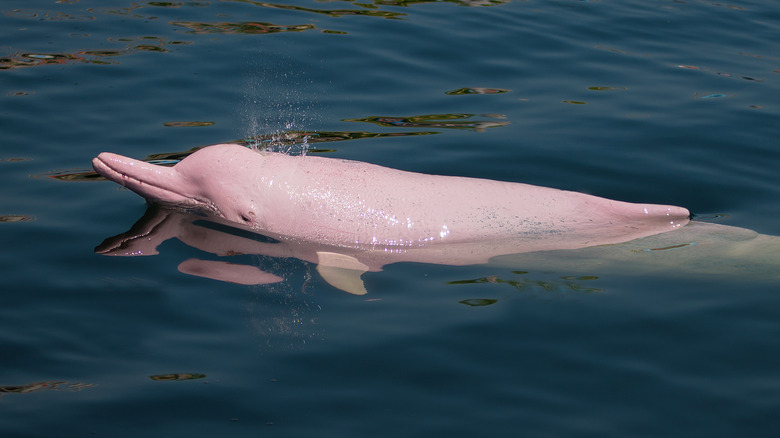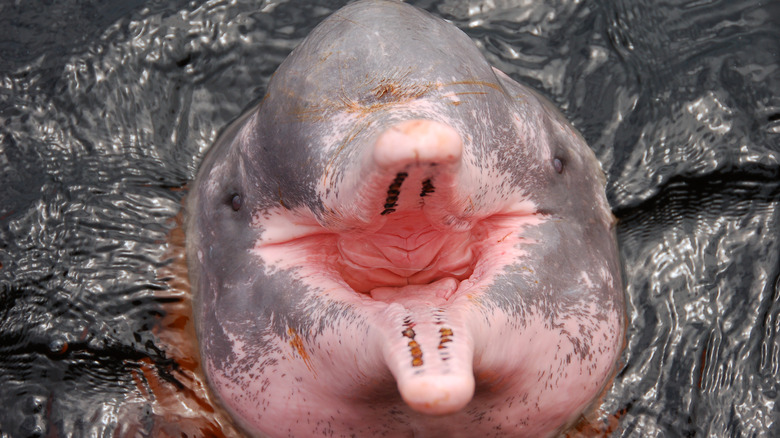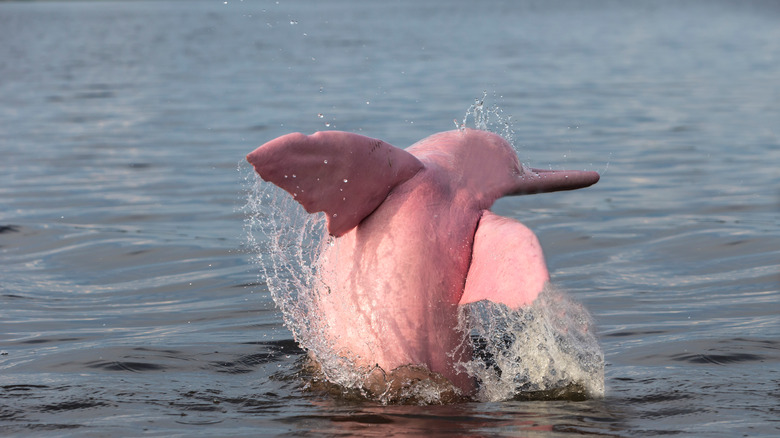Visit These Two Places To Spot Rare Pink Dolphins
Dolphins are found all over the world. With 36 species of this marvelous mammal, dolphins live in environments from oceans to freshwater rivers, and estuaries. Intelligent and chatty, spotting a dolphin is always a treat, especially if it's a rare pink dolphin.
While there have been pink dolphin sightings in the United States, these cetaceans are likely bottlenose dolphins with albinism. One particular pink dolphin, named Pinky by its fans, was first spotted in 2007. It's speculated that Pinky has been exploring the Gulf of Mexico for approximately 16 years. A second recently spotted pink companion near Louisiana is most likely Pinky's offspring.
There are only two species of pink dolphins and two places on the planet to spot them. Located in different parts of the world, the Amazon River dolphin swims the waters of the Amazon rainforest and neighboring rivers, and the Indo-Pacific humpback dolphin lives in Asia and is most often spotted near Hong Kong. While these might not be the best locations to swim with dolphins, they are your only chance to spot rare pink dolphins.
Pink Amazon River dolphins are endangered and mythical
Pink Amazon River dolphins are found in the Amazon River (as expected from their name) and also in the Orinoco River Basin in South America. Growing up to 9.2 feet and weighing approximately 352 pounds, babies are born gray and change colors as they age. While some Amazon River dolphins might be gray with pink spots, some are the color of bubblegum. On average, males tend to be pinker than females.
Why these unusual creatures are pink is unknown. However, it's believed to be a combination of what they eat, where they live, and genetics. In science, you are what you eat. For example, flamingos — who are also born gray — have a diet consisting primarily of items that produce carotenoids, which are organic pigments. As they grow, their color shifts to pink. Similarly, since Amazon River dolphins eat fish and crustaceans that have carotenoids, it's likely carotenoids contribute to the pink hue. Additionally, genetic skin thickness and environmental stress may also have a role in the Amazon River dolphin's beautiful coloring.
Not all Indo-Pacific humpback dolphins are pink
Indo-Pacific humpback dolphins frequent shallow waters from central China to the east coast of India. Like the Amazon River dolphins, babies are born pale gray, but their color changes as they age. For those dolphins who call China home, their skin will likely be white. But Indo-Pacific humpback dolphins settling near the world's most visited city, Hong Kong, are often pink. Elsewhere throughout Asia, Indo-Pacific humpback dolphins are often gray. The pink Hong Kong residents have frequented the waters for hundreds of years.
Also like the pink Amazon River dolphins, the Indo-Pacific humpback dolphins are endangered. The pink dolphins living near Hong Kong are especially in danger. Hong Kong is one of the busiest ports across the globe. Shipping and pollution greatly affect marine life here, including the livelihood of the Indo-Pacific humpback dolphins. While so much damage to underwater marine life has already occurred, it's not too late to make a change. According to National Geographic, increased conservation efforts can help preserve Hong Kong's rich underwater biodiversity.


